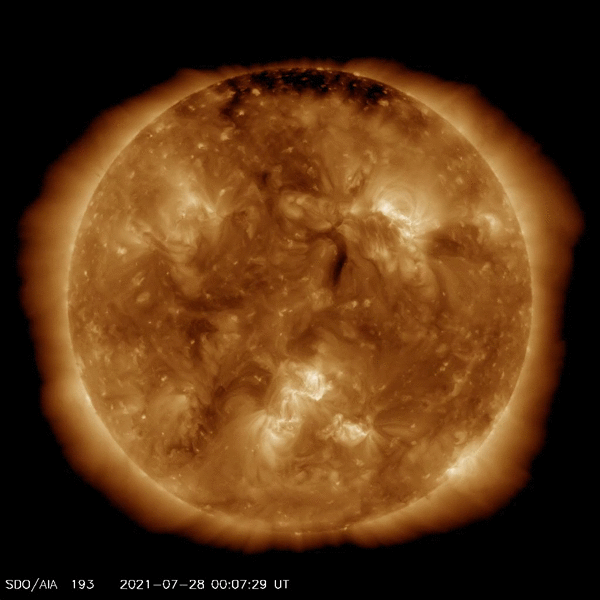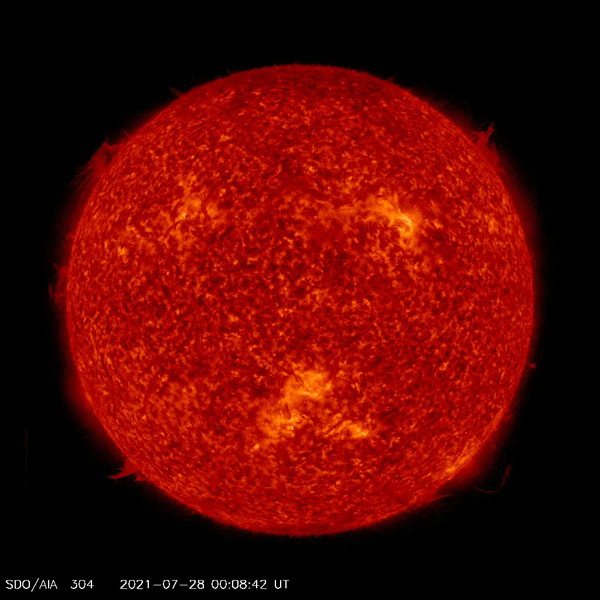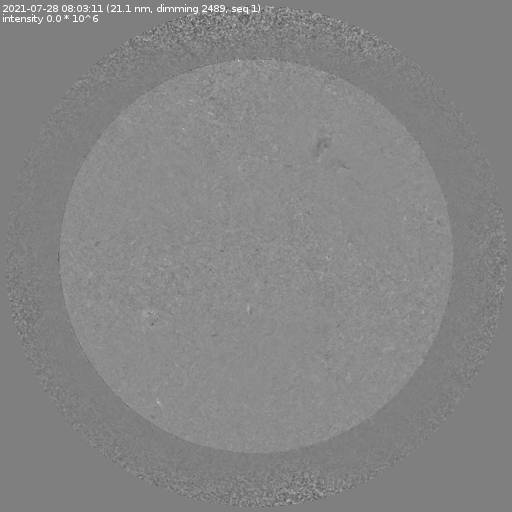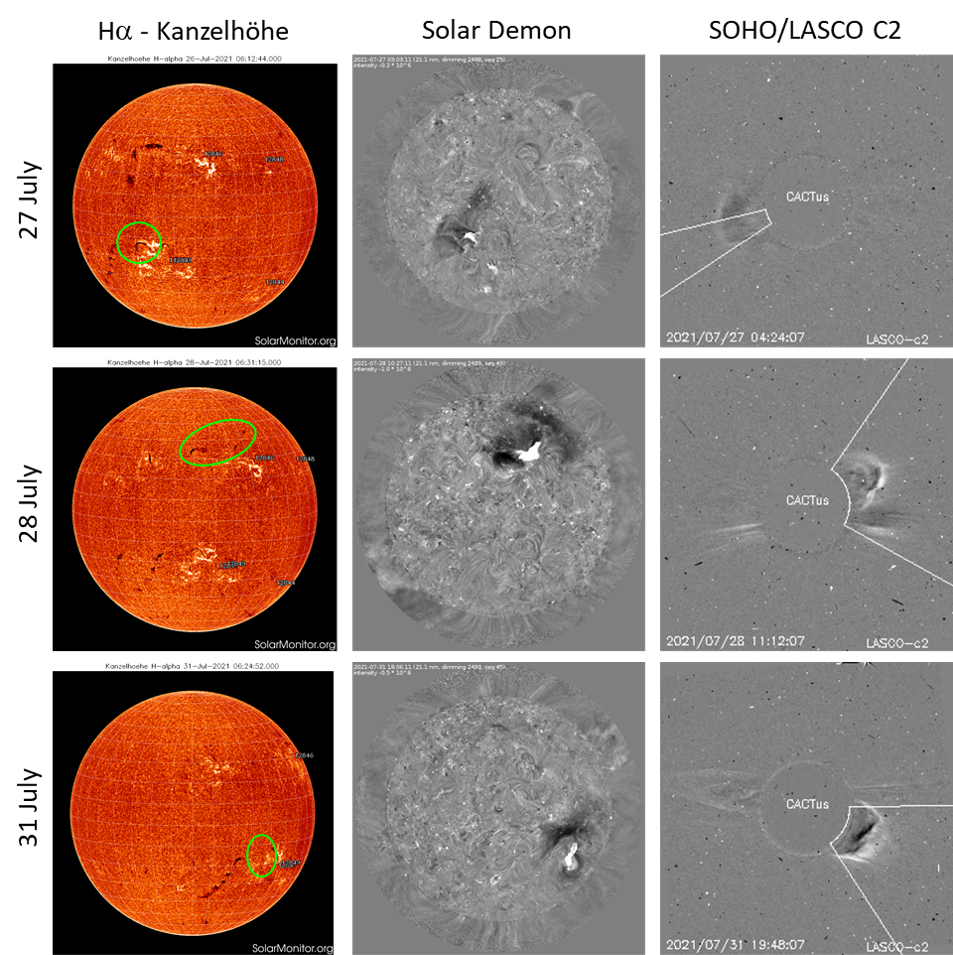Coronal dimmings are often observed in response to solar eruptive events, and are visible in extreme ultraviolet (EUV) imagery of the solar corona as temporary dark voids. They were first observed in Skylab (1970s) and Yohkoh (1990s) data and called transient coronal holes, because of the close resemblance to coronal holes but with much shorter lifetimes. Further studies with the Extreme-ultraviolet Imaging Telescope (EIT) on board the Solar and Heliospheric Observatory (SoHO) revealed their close association to the source of coronal mass ejections (CMEs), and have established that these (EUV) dimmings are a good indicator of the apparent base of the white light CME. Thus, dimmings are usually interpreted as mass depletions due to the loss or rapid expansion of the overlying corona.
Extended statistical studies have found that CMEs also occur without dimmings, and that coronal dimmings are more likely to occur near active regions. They typically show a rapid decrease in emission (darkening) followed by a more gradual recovery lasting from 3 to 12 hours and rarely persisting longer than one day - in contrast to true coronal holes which tend to persist for many days. (See Mason et al. 2014)
Because of their close association with CMEs, coronal dimmings are of particular interest for the space weather community. Indeed, because earth-directed CMEs may result in geomagnetic storms which in turn can adversely affect ground- and space based technology, understanding CMEs and improving predictions for CME properties are important for space weather. Hence, improving our comprehension of coronal dimmings may finetune our prediction accuracy in CME arrival times and impact.


Last week, several coronal dimmings of various sizes were observed in EUV imagery made by the SDO/AIA instrument. They were all associated with filament eruptions. The largest of these coronal dimmings took place on 28 July and is shown above, displaying on top AIA 193 (temperature of about 1.2 million degrees) and at the bottom AIA 304 (temperature around 80.000 degrees). Just as AIA 211 (at a slightly higher temperature of about 2 million degrees), the AIA 193 passband is particularly well suited for identifying coronal holes and coronal dimmings. The AIA 304 filter captures much better filaments and filament eruptions (prominences and prominence eruptions near the solar limb).
Because coronal dimmings are not always easily discernible, STCE scientists developed a tool called "Solar Demon" a few years ago to automatically detect -amongst other solar features- coronal dimmings in AIA 211 imagery. To this purpose, difference images (one image subtracted from the next, but also compared to the base image) are used. These images are corrected for the solar rotation, with the complete methodology described in Kraaikamp and Verbeeck (2015). The result is the imagery underneath (based on the same 28 July event), leaving no doubt on the location and extent of the coronal dimming.

Last week's coronal dimmings were associated with filament eruptions. Underneath the 3 most spectacular events, resp. from 27, 28 and 31 July. The images in the left column are H-alpha images from the Kanzelhöhe Observatory (via https://solarmonitor.org/), with the concerned filaments highlighted within a green circle. In the middle are the related coronal dimmings following the filament eruptions, as deduced via Solar Demon from the SDO/AIA 211 images. On the right are the associated CMEs as detected by the CACTus software in SoHO's LASCO C2 coronagraphic imagery. The related CMEs were relatively faint and had speeds of 300-400 km/s, and the 27 and 28 July events were thought to potentially have an earth-directed component. However, so far it seems only the 28 July CME has influenced the geomagnetic field according to the latest solar wind data, but the impact was strong enough to create a minor geomagnetic storm (estimated Kp of 5) late on 2 August.






